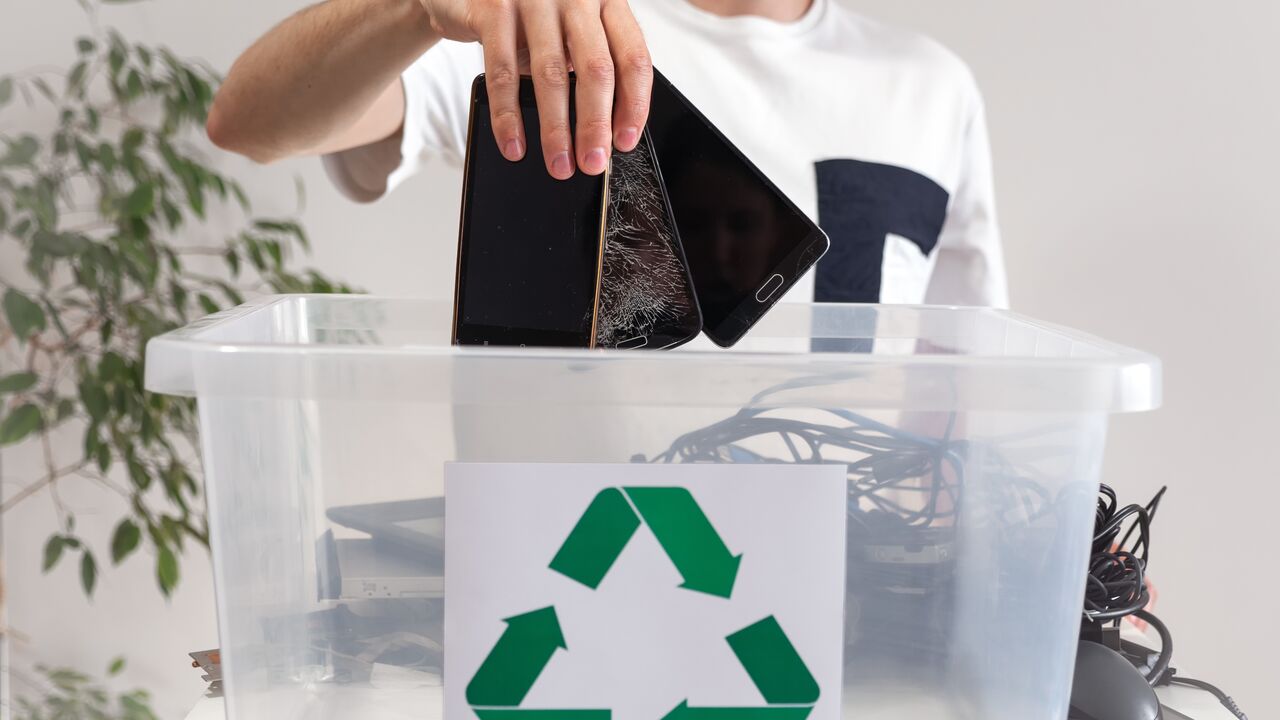The 7-Second Trick For Recycling Lives Services
8 Easy Facts About Recycling Lives Services Described
Table of ContentsAll about Recycling Lives ServicesThe Only Guide to Recycling Lives ServicesThe smart Trick of Recycling Lives Services That Nobody is Talking AboutThe Ultimate Guide To Recycling Lives ServicesAn Unbiased View of Recycling Lives Services

You can take all home electric items to Oxfordshire's waste reusing centres for reusing. If your thing is in working problem, take into consideration contributing it. If your electrical item is damaged, you can seek a local repair work caf where volunteers can fix it. You could also think about obtaining electric items that you do not utilize often. Furthermore, all Oxfordshire regional authorities accept vapes and e-cigarettes as a separate kerbside collection. Disposable vapes be placed inside your wheelie containers. Just how they are collected in each area varies somewhat; check you have the proper information for your location. Utilize the Waste Wizardsearch device to examine exactly how your neighborhood authority gathers this waste or find various other drop-off places in your location.
Portable batteries the kind you discover in tiny handheld gadgets can likewise be reused at the kerbside but not inside any of your bins. Examine the Waste Wizard for just how to do this in your area. Larger shops that offer batteries also have collection points for recycling old batteries. Batteries must constantly be removed from electrical products where they are designed to do so and reuse separately, Energy-saving, LED and compact fluorescent light bulbs and tubes can be recycled at our recycling centres.
Recycling Lives Services Things To Know Before You Buy
Older-style filament or halogen light bulbs can be disposed of in your basic rubbish bin at home. Some Do it yourself shops also have collection factors for light bulbs.

Things about Recycling Lives Services
Electrical products are broken down into separate pasts to ensure that the various products they are comprised of can be eliminated and reused. Waste reusing centres are for usage by homeowners just and can not approve waste from industrial sources. Little services and investors have a task of treatment under this plan, which implies they also need to abide by the WEEE regulations.
E-waste, electronic waste, e-scrap and end-of-life electronic devices are terms usually made use of to explain used electronics that are nearing completion of their beneficial life, and are disposed of, donated or offered to a recycler. The UN specifies e-waste as any type of discarded items with a battery or plug, and features toxic and unsafe materials such as mercury, that can present severe threat to human and environmental health.
Some Known Factual Statements About Recycling Lives Services
Only 17.4% of this digital waste, containing a blend of hazardous materials and precious products, will certainly be tape-recorded as being effectively gathered, dealt with and reused - https://trello.com/w/rcyclng1vssvc. Several campaigns are carried out to tackle this growing worry, however none can be fully efficient without the active role and appropriate education and learning of consumers

Furthermore, mining discarded electronics creates 80% much less discharges of co2 each of gold find compared to mining it from the ground. In 2015, the extraction of resources accounted for 7% of the world's energy consumption. This means that moving towards making use of more secondary raw materials in electronic goods could help considerably in reaching the targets set out in the Paris Agreement on environment adjustment.
What Does Recycling Lives Services Mean?
When the carbon dioxide launched over a device's life time is considered, it mostly occurs throughout production, before customers purchase an item. This makes lower carbon processes and inputs at the production stage (such as use recycled raw products) and product life time vital factors of total environmental effect.
Also in the EU, which leads the world in e-waste recycling, just 35% of e-waste is formally reported as properly accumulated and recycled. Around the world, the average is 20%; the staying 80% is undocumented, with much finishing up hidden under the ground for centuries as landfill. E-waste is not naturally degradable. The absence of recycling taxes the international electronic market and as gadgets come to be more various, smaller sized and extra complex, the problem rises.
The remaining mass of e-waste mainly plastics laced with metals and chemicals positions a more unbending problem. A new vision for the production and consumption of electronic and electrical goods is needed. It is easy for e-waste to be framed as a post-consumer problem, but the issue encompasses the lifecycle of the devices everyone makes use of.